Most people are unaware that flower arranging can be a meditative, therapeutic practice. Flowers have both medicinal and symbolic healing properties, making them a uniquely beautiful and natural tool for healing and personal growth.
This article delivers practical steps and advice to anyone wanting to craft eye-catching arrangements that are as meaningful as they are beautiful. Focusing on vessel choice, symbolic blooms, and the art of placement, it’s a comprehensive guide for creating floral displays that resonate with beauty and harmony, as well as fostering mindfulness and building personal resilience.
What you will learn:
Ikebana is a mindful Japanese art that involves creating flower arrangements using principles of form, structure, and minimalism, promoting mental clarity and peace.
The choice of vessel for flower arranging is crucial as it influences the overall design; factors such as size, material, color, and personal touches can enhance the aesthetic and symbolism of the floral arrangement.
Flower arranging is a thoughtful practice where not only beauty but also the symbolism and healing properties of flowers are considered, allowing for personal expression and the creation of meaningful decor or gifts.
- You needn’t be a florist to use and enjoy flower arranging!
Ikebana: The Art & History of Japanese Flower Arranging
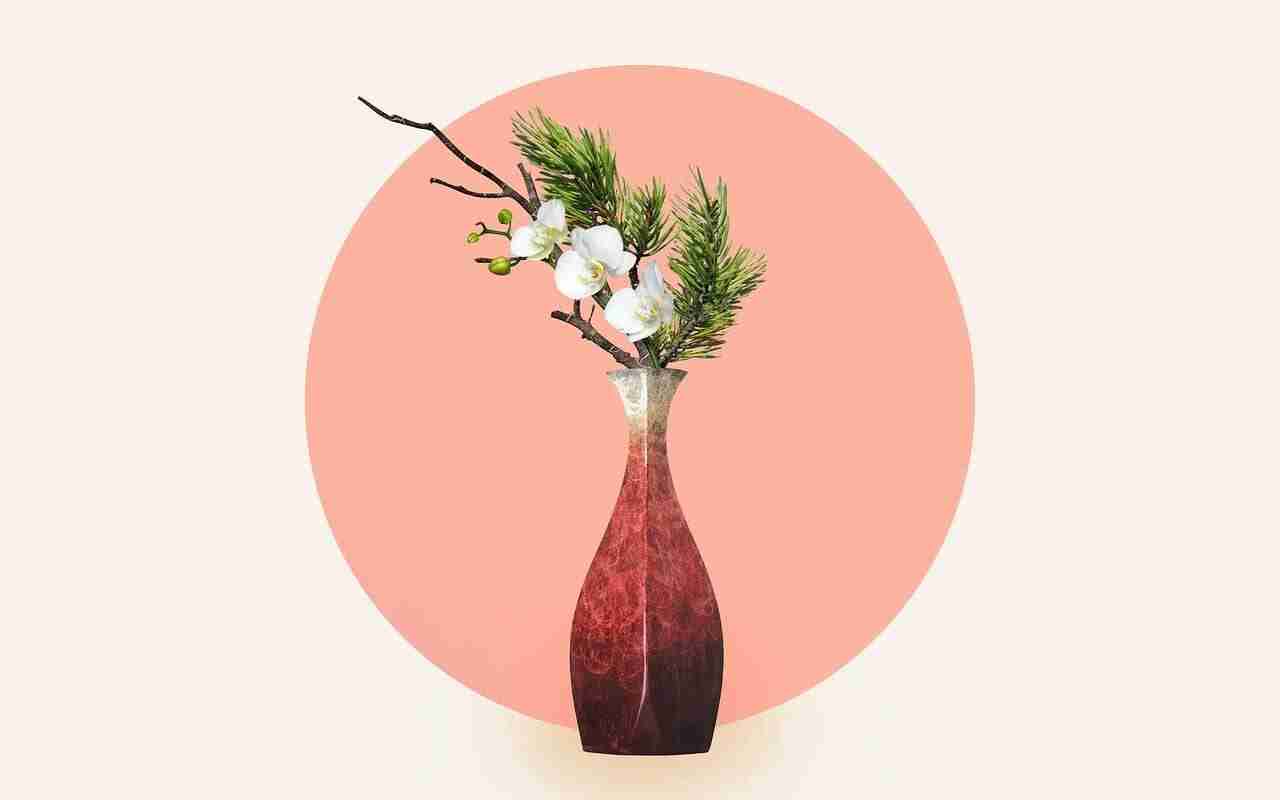
Ikebana is the name for the traditional Japanese art form that is more than just arranging flowers in a vase. It’s a meditative practice that draws you into the present moment, appreciating the beauty, form, and balance of nature.
Ikebana has its roots in the 6th century when Buddhism was introduced to Japan from China and Korea. Initially, it began as a ritual offering of flowers placed on altars in Buddhist temples. But over time, these offerings evolved into a more stylized form of art that was practiced by the temple priests and, eventually, by the samurai and nobility.
Much more than a simple decoration, Ikebana is a disciplined art form that values the structure, form, and minimalism of the arrangement, focusing on the overall balance and harmony between the materials used, the container, the negative space between flowers, and the space around the arrangement.
The foundation of Ikebana is deeply entwined with Japanese concepts of aesthetics and spirituality, such as wabi-sabi (the beauty of imperfection) and mono no aware (the awareness of the impermanence of all things).
The key elements in Ikebana floral design are:
Form
Structure
Balance
Minimalism
Textural elements
It’s not about stuffing a vase full of flowers. It’s about carefully selecting each element, from the focal flowers to the leaves, considering their shape, color, and how they interact with each other.
Ikebana arrangements are asymmetrical, reflecting the natural growth patterns of plants. The vase is also a crucial part of the arrangement, not just a container for the flowers but an element that complements and enhances the overall design.
A Mindful Practice
Akin to meditation, Ikebana is a mindfulness practice. As you carefully choose each element and place it in the arrangement, you become fully present and absorbed in the task at hand.
The process of creating Ikebana is meant to be therapeutic, reducing stress and promoting mental clarity. It also fosters an appreciation of beauty in simplicity and encourages inner reflection and the cultivation of patience.
So, as you embark on this journey of floral arranging, bear in mind that it’s not just about creating beautiful designs but also about experiencing the joy and tranquility of the process.
Choosing Your Vessel: The Foundation of Flower Arranging
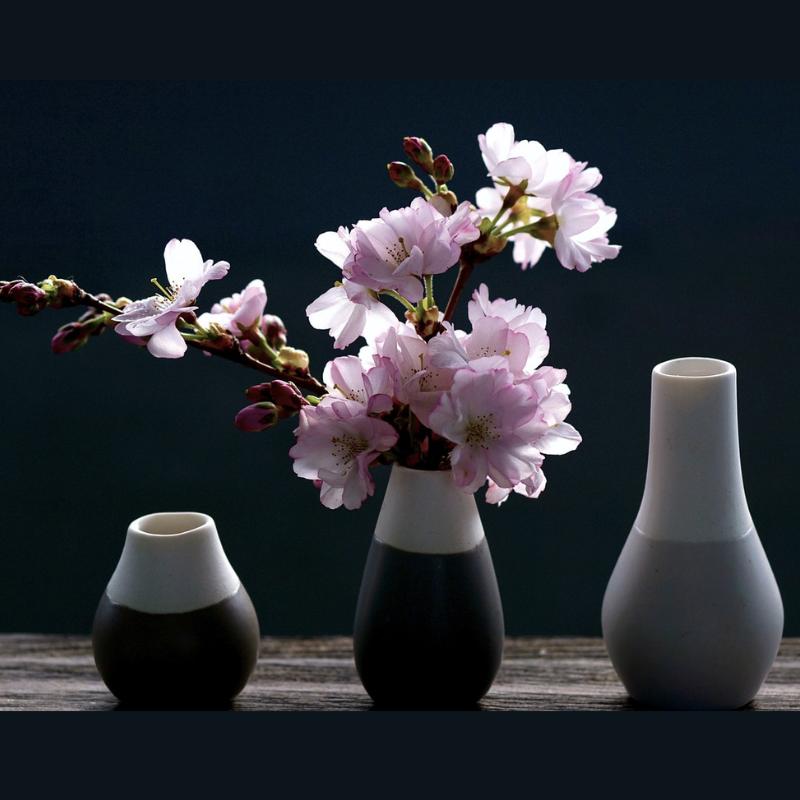
The vessel, or vase, is much more than just a container for your flowers. It’s the foundation of your flower arrangement, a crucial element that supports and enhances the overall design. The right vase not only provides water to cut flowers but also assists in maintaining the arrangement’s form, emphasizing its role as a decorative focal point in various settings.
When choosing vases for arrangements, several factors come into play. Here are some considerations to keep in mind:
The volume of the vase should be in proportion to the size of your arrangement to avoid overcrowding of stems.
The material of the vase should match the style of your arrangement. For example, a rustic ceramic vase would be perfect for a wildflower arrangement, while a sleek glass vase would complement a minimalist design.
The color of the vase should complement the colors of your flowers and the decor of the room where the arrangement will be displayed.
Additionally, you can add a personal touch to your arrangement by creatively adapting the vase. For instance, a vintage teapot can serve as a unique and charming vase for a small arrangement.
Tying a ribbon around the vase or attaching a small card with a message can add a personal touch that transforms a simple vase into a unique floral design that complements the flowers and reflects your personal style.
The Flowers: Consider the Symbolism & Healing Properties
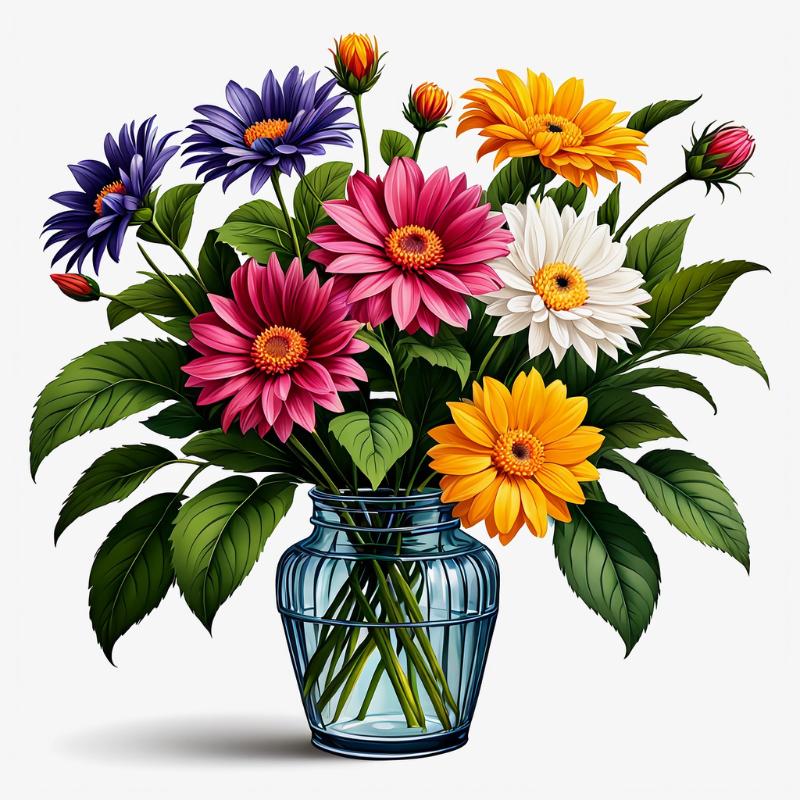
Flower arranging is not just about creating something beautiful; it’s also about expressing and communing with oneself. By incorporating flowers that have specific symbolic meanings or purposeful therapeutic properties, you can create an arrangement that is pleasing to look at as well as emotionally or physically healing.
When choosing your flowers, it’s not just about picking the most beautiful ones. Each flower has its own symbolism, healing properties, and legends and folklore attached. Careful consideration of which blooms you use will bring an additional layer of depth and meaning to your flower display.
Popular Flowers’ Symbolism & Properties
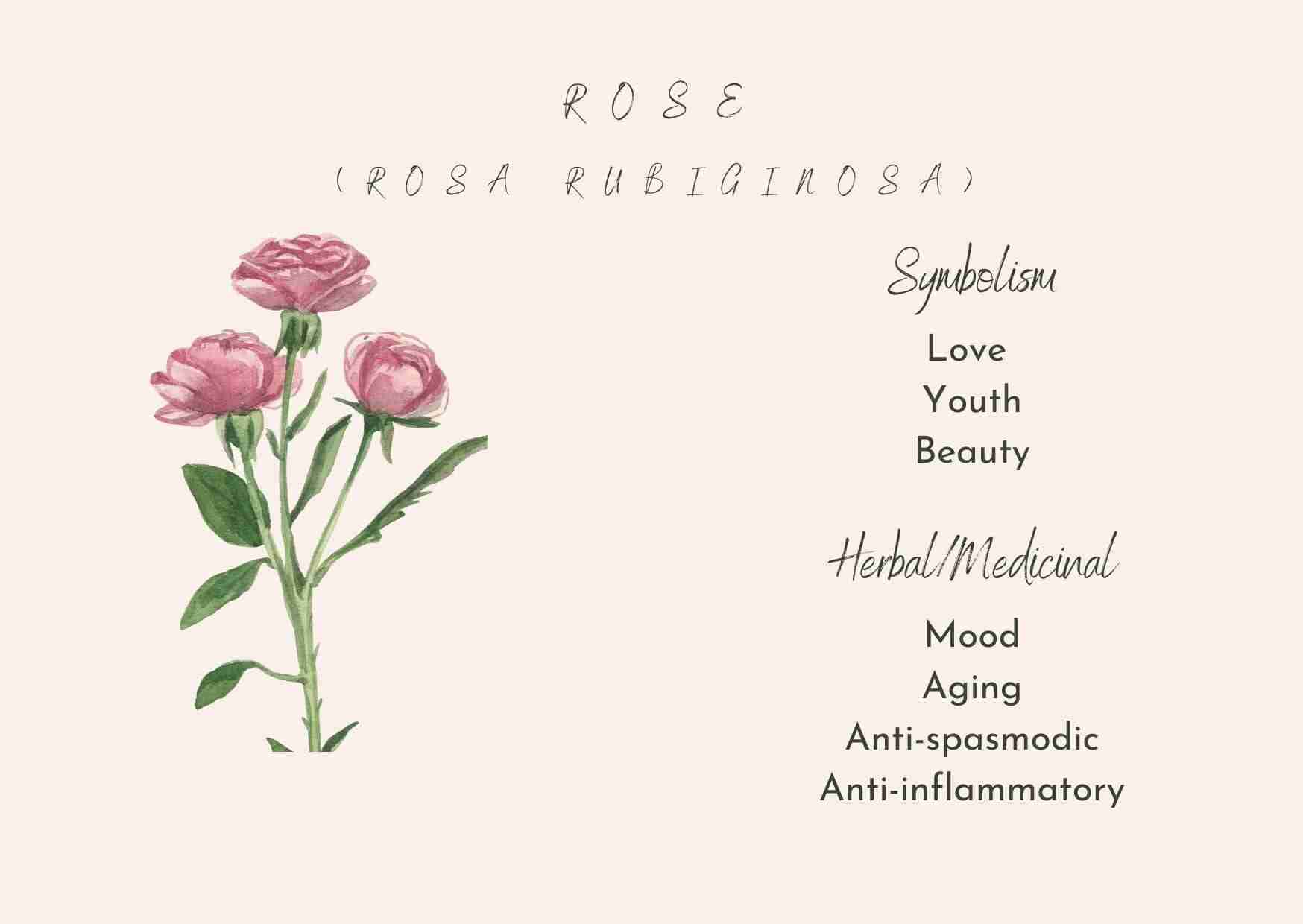
Roses
The rose is one of the oldest flowers in cultivation. It is symbolic of beauty, youth, and love. Different colored roses also have different meanings. From an herbalist’s perspective, roses have many healing properties, such as treating inflammation, diabetes, dysmenorrhea, depression, stress, seizures, and aging. Rose water is also used for skin care and has antibacterial effects.
Tulips

Tulips have a historic association with emotional and physical healing as well. They have skin-cooling properties and were used in ancient remedies to treat fever and skin irritation.
Tulips have also long been appreciated for their ability to lift spirits. They symbolize love, wisdom, and spiritual insight, which can be particularly healing during times of emotional distress or after periods of hardship. The bright colors of tulips are known to evoke feelings of happiness and positivity, which is powerful for relieving stress and elevating mood.
Lavender

Lavender is known for its beautiful purple hue and enchanting fragrance, but it also has remarkable healing properties. For one, it possesses anti-inflammatory properties that can ease skin irritations and soothe minor burns and insect bites. Historically, lavender was used in medicinal practices dating back to ancient times. During the Middle Ages, it was often included in herbal remedies to treat everything from headaches to insomnia.
Beyond its physical healing benefits, lavender is widely revered for its profound impact on emotional well-being, particularly in reducing stress and alleviating the symptoms of grief and depression.
Gerbera Daisies

Gerbera daisies have several meanings, all sharing a common denominator, happiness. The Egyptian meaning of gerbera is a closeness to nature and devotion to the sun. The Celts believed the gerbera would comfort one’s sorrows and everyday stresses. In general, gerberas represent simple beauty and a very happy life.
Discharging oxygen and absorbing carbon dioxide and other airborne toxins at night, gerberas can also boost mood, relieve stress, and even enhance concentration.
Make it Uniquely Yours
Remember, the beauty of flower arranging lies in its ability to express your creativity and individuality. By considering the symbolism and healing properties of your flowers, you can create an arrangement that communicates a particular message, creates a desired mood, or inspires healing in a specific way.
Incorporating these flowers into your arrangement not only enhances its beauty but also turns it into a meaningful gift. Whether you’re creating a soothing arrangement for a friend who’s going through a tough time or a romantic bouquet for a loved one, careful consideration of the flowers included can add a thoughtful and personal touch to your arrangement.
The Art of Placement: Adding Focal Flowers
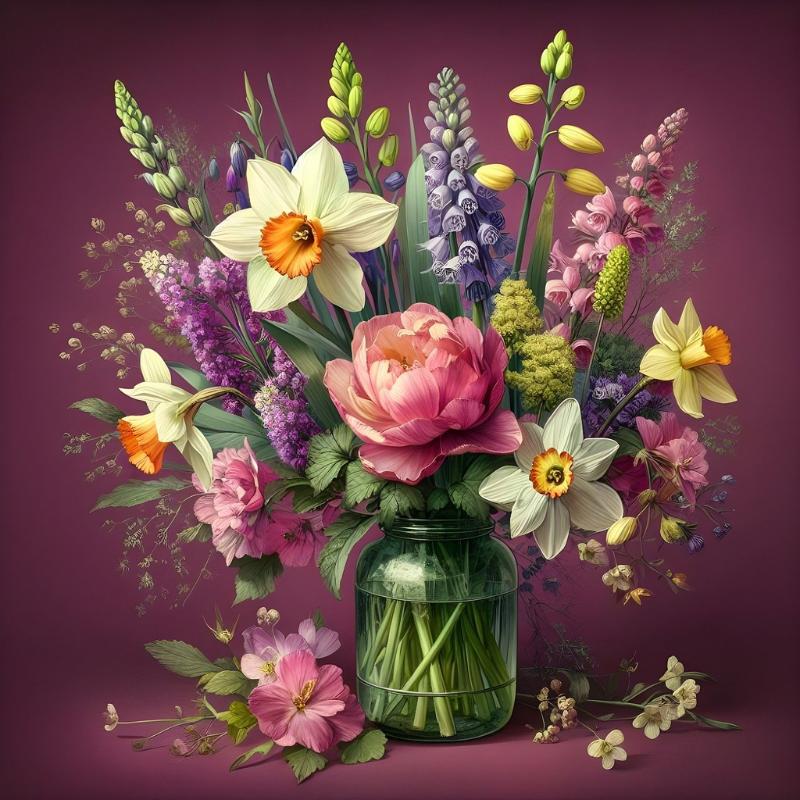
Floral design requires more than choosing the right flowers and vases- it’s also about how you place the flowers in the arrangement. Whether you’re making an Ikebana-style display or a more Western-stylized arrangement, one of the key elements of a visually appealing arrangement is the focal flowers (also called primary flowers). These are the most striking blooms in the bouquet, playing a critical role in drawing attention and determining the arrangement’s visual appeal.
Some popular choices for a primary flower include:
Garden roses
Tulips
Ranunculus
Peonies
These flowers are known for their ability to captivate onlookers with their beauty. When incorporating primary flowers, you can pick between one to four varieties, ensuring a harmonious display with intentional variation when desired.
The way you place a focal flower in the arrangement also matters. To achieve a visually appealing bouquet, focal flowers should be introduced in odd numbers like one, three, or five. Also, ensure to keep the stems at varying heights, creating a more natural and dynamic look. This way, your focal flowers will draw attention, setting the tone for the rest of the arrangement.
Incorporating Secondary Blooms
While the focal flowers are the stars of the bouquet, the secondary blooms play a crucial supporting role. These flowers fill spaces around the focal flowers and add depth to the color palette, creating a more balanced and visually appealing arrangement.
To create a dynamic and interesting design, select secondary blooms that feature differently shaped heads from the focal flowers. This contrast in shape will create visual interest and make your arrangement more captivating.
Distribute these secondary flowers amongst the focal blooms, creating layers that enhance the arrangement’s depth. Notice the negative space between primary and secondary blooms and ensure it has a harmonious and balanced appearanced. By skillfully incorporating secondary flowers, you can create an arrangement that’s not just beautiful but also rich in texture and depth.
Finishing Touches with Fillers
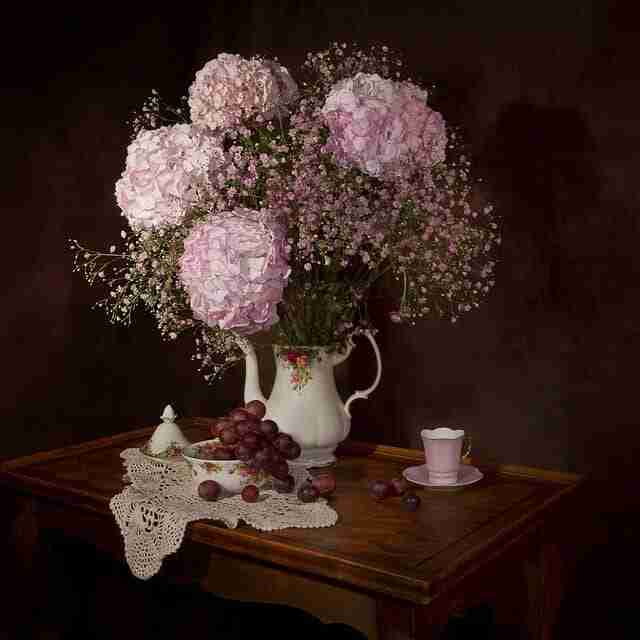
Once you’ve placed your focal and secondary flowers, it’s time to add the finishing touches with filler flowers, greenery, or other natural elements like sticks or branches. These elements complete the arrangement by filling around the primary flowers, adding texture, and enhancing the visual impact of the bouquet.
Filler flowers like Solidago, Baby’s Breath, Delphinium, and Snapdragons are perfect for this job. They’re smaller flowers, delicate, and available in a variety of colors, making them ideal for filling gaps and adding texture to your arrangement. Combine smaller flowers in groups of three or five to create visual clustering.
Structural Elements of Flower Arranging
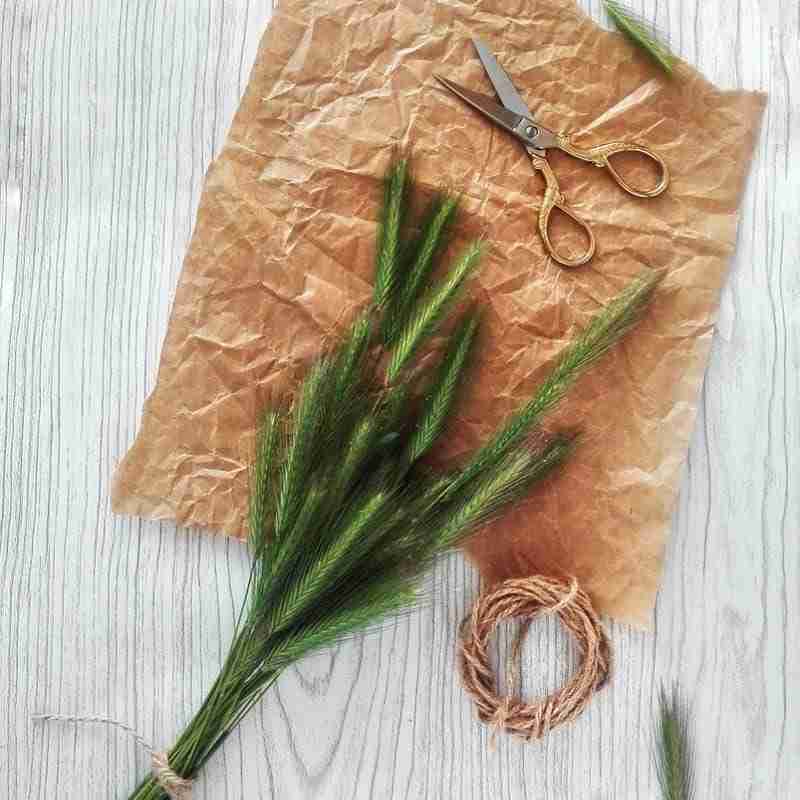
Creating a beautiful flower arrangement, especially a large one, sometimes requires special tools of floral design to help ensure a bouquet holds its shape. For this, you can use structural elements like floral tape and chicken wire. These tools are commonly used by florists to hold blooms in place and maintain the desired shape of the display. By using these elements, you can create a stable and structured arrangement that will stay beautiful for a longer period.
Floral tape can be used to create a grid over the mouth of the vase, helping the flowers stay in place. It can also be used to bind the stems of one flower to another or foliage together, providing additional support. Meanwhile, chicken wire can be bent into a ball to DIY a floral “frog” for inserted bouquet structures. However, be sure to wrap it well with floral tape (*affiliate link) to prevent rust from staining the vase.
Eco-Friendly Alternatives to Floral Foam
In the world of flower arranging, floral foam is often used to create a stable base for the flower arrangement. However, it’s not the most eco-friendly option. Luckily, there are alternatives like the chicken wire mentioned above. Not only is it reusable, but it’s also recyclable if uncoated, making it a much more sustainable choice.
To create a framework for your flower arrangement, you can use chicken wire in layers or stuff it into a container. For optimal placement control of stems within an arrangement, they should penetrate at least two layers of chicken wire with about an inch of separation between the layers. By using chicken wire instead of floral foam, you can create beautiful arrangements that are also kind to the environment.
Preserving Your Creation: Tips for Longevity
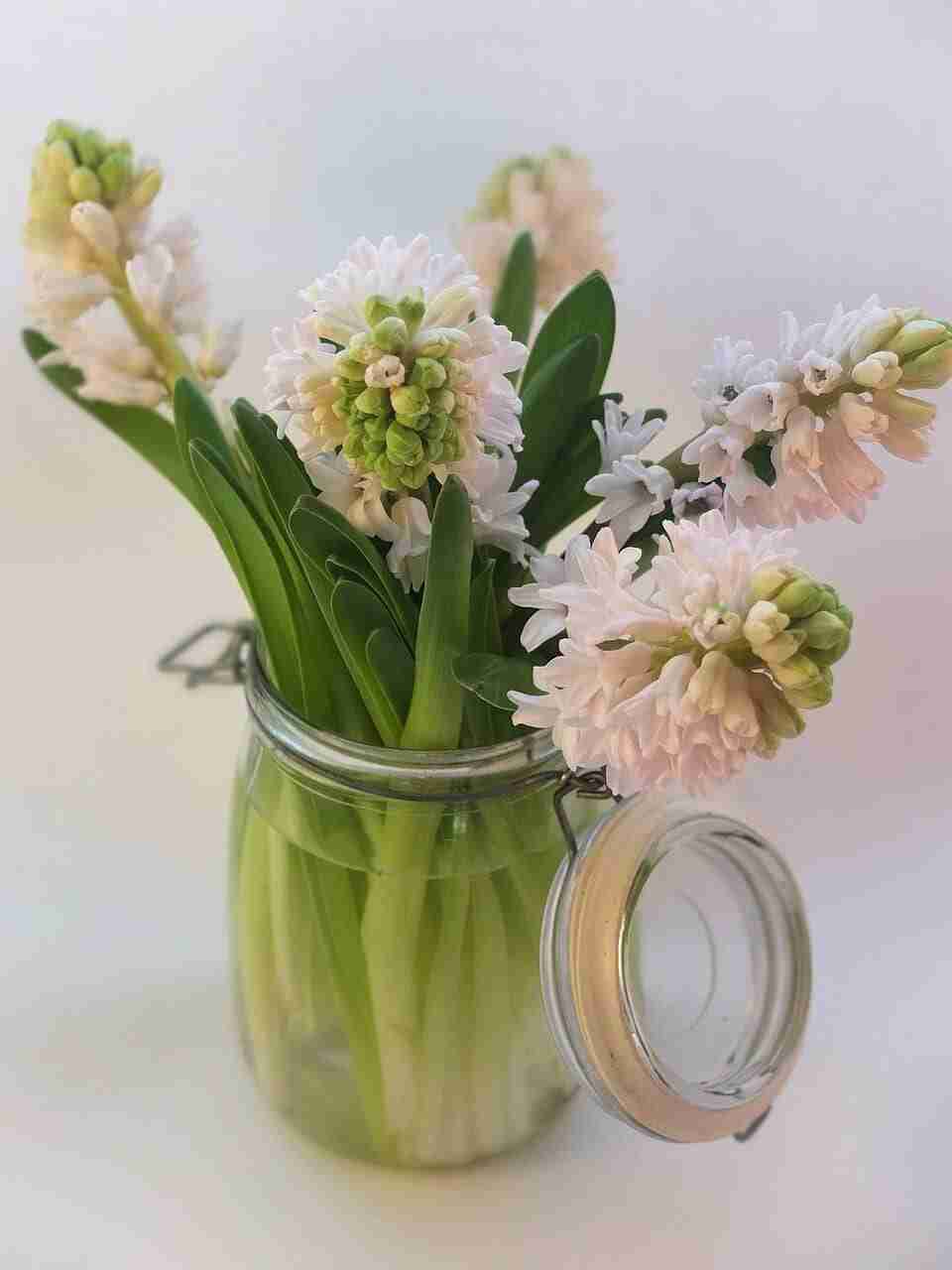
Creating a beautiful flower arrangement is a rewarding experience, but it’s equally important to know how to preserve your creation. Start with the basics: use a clean vase and fresh water to reduce bacterial growth. Make sure to remove any leaves that are submerged in water to further prevent bacterial development.
One of the keys to preserving the freshness of your arrangement is regular maintenance. Re-cut the stems on a diagonal every two days and change the water in the vase. This prevents bacteria from clogging the stems and ensures that your flowers stay hydrated.
To extend the life of your arrangement even further, add a floral preservative to the water (a dash of vodka works here!) when first arranging the flowers and after each water change. This provides nutrients that help flowers last longer.
Grow, Bloom, & Heal Through Flower Arranging
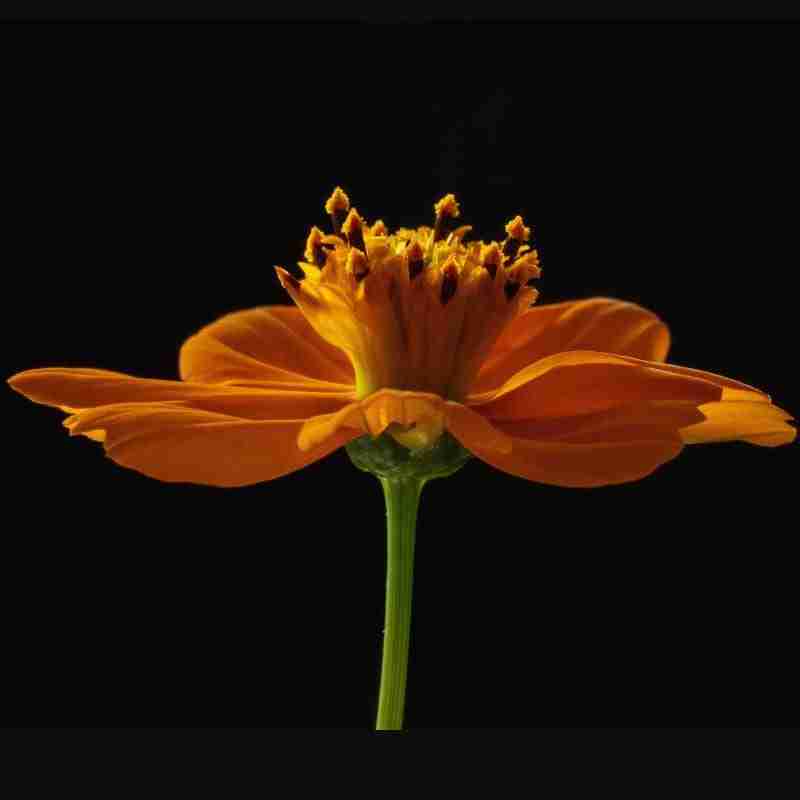
Now that your bouquet is complete, it’s time to revel in the outer beauty you’ve created and the inner peace you’ve cultivated. Take some time to really look at your flower arrangement thoughtfully. Allow it’s beauty to fill your inner vision, creating a landscape of peace and serenity within you.
Reflect on the journey these flowers have made from seed to bloom. It’s a testament to resilience, growth, and the natural cycle of life. With this thought, acknowledge your own capacity for growth and renewal. Give gratitude to the universe for your own resilience.
Take a few more deep, mindful breaths, allowing the colors, textures, and scents of the flowers to anchor you in this moment of peace and contentment. As you move forward with your day, remember this sense of peace. Carry the beauty of the flowers within you. May their grace remind you of the beauty in the world and within yourself.




























Such a detailed explanation. This looks amazing.
Thank you! It is a lot of fun, too!
Thank you for this comprehensive guide!
Thank you for reading and commenting!